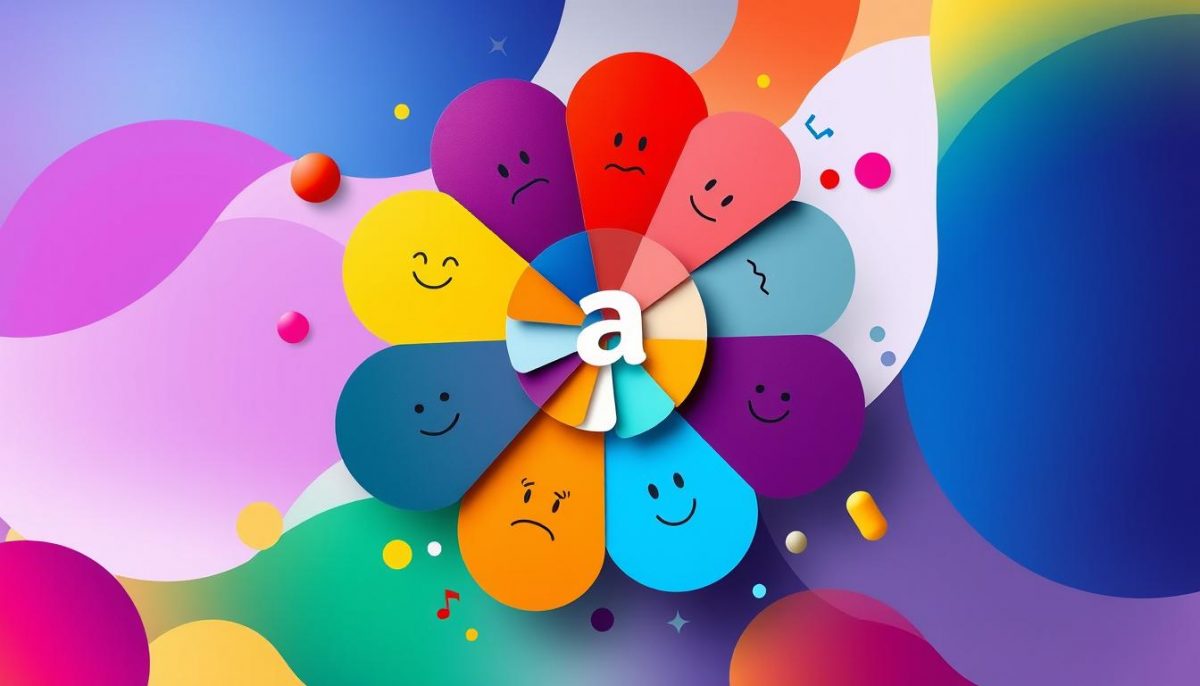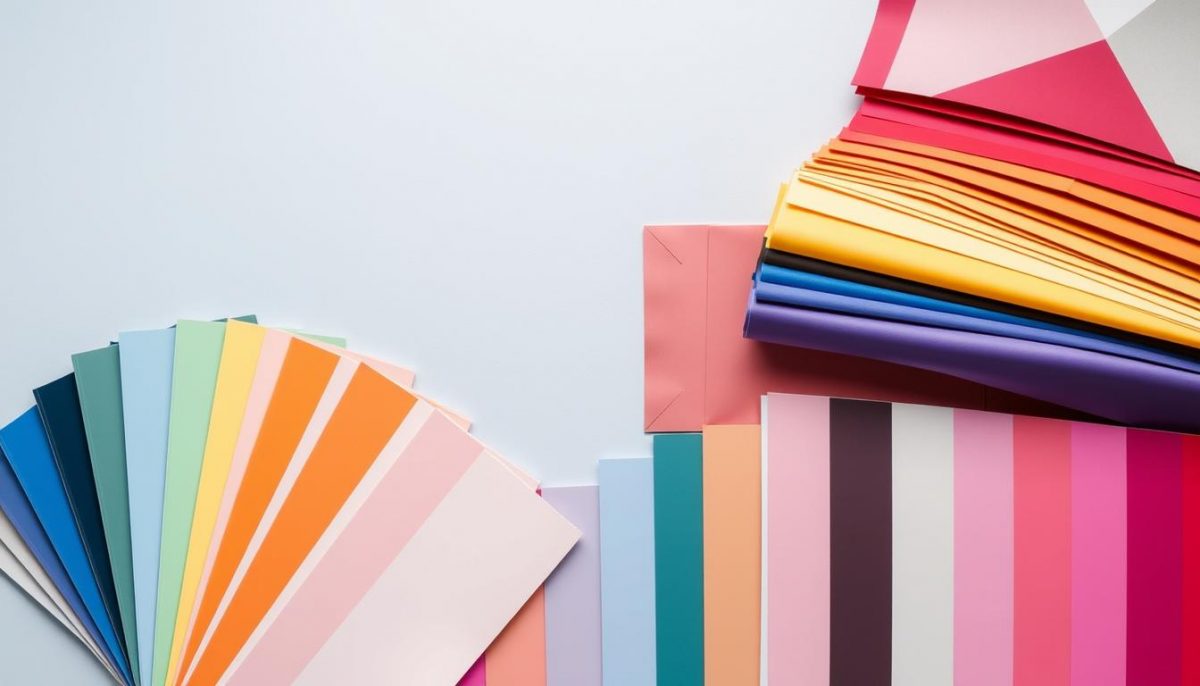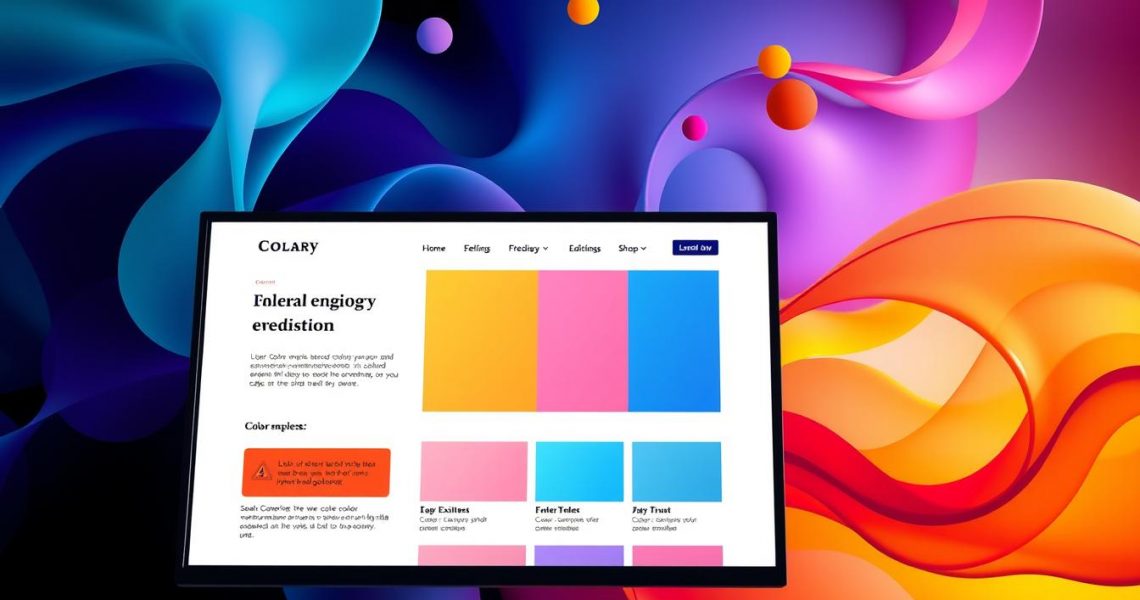The Role of Color Psychology in Web Design
8 November 2024In today’s digital world, knowing about color psychology is key for good web design. Colors do more than just look good; they shape how users feel and see a brand. The right colors can make people feel certain ways, guide them, and make them more engaged with a site. We’ll look at how using colors wisely can make a website better, leading to more loyal customers and a stronger brand.
By understanding the impact of colors, businesses can make websites that attract and connect with their audience.
Understanding Color Psychology
Color psychology looks at how colors affect our feelings and actions. It shows the importance of colors in our emotions and thoughts. This field helps us understand the meanings and effects of colors, which is key in web design.
The Basics of Color Psychology
Each color has its own meaning and impact. For instance, red means urgency and excitement, while blue is about trust and calm. Knowing these basics helps us see how colors shape our experiences. Here’s a quick look at primary colors and what they usually mean:
| Color | Meaning | Associations |
|---|---|---|
| Red | Urgency, Excitement | Passion, Love, Danger |
| Blue | Trust, Calmness | Stability, Reliability, Peace |
| Green | Growth, Harmony | Nature, Prosperity, Safety |
| Yellow | Optimism, Clarity | Happiness, Warmth, Caution |
How Colors Affect Emotions and Behaviors
Colors can really stir up emotions, making them crucial in understanding behavior. Research shows that certain colors can push us to buy or sign up for something. The way colors and emotions mix can greatly affect how we interact with things online. For example, bright colors grab our attention, while soft colors help us relax. Web designers use this knowledge to make sites that feel good and work well.
The Role of Color Psychology in Web Design
Choosing the right colors for a website is key to a strong brand identity. A brand color strategy that uses colors consistently can make a company stand out. For example, Coca-Cola uses a bright red to spark excitement, and Facebook’s blue conveys trust and connection.
Good color branding boosts brand recognition and builds customer loyalty. This makes choosing colors a vital part of web design.
Why Color Choice is Critical for Branding
Colors trigger emotional responses and perceptions linked to brands. A well-thought-out brand color strategy strengthens user connection and creates a lasting visual identity. Studies show that 90% of consumers judge products by color alone.
This highlights the need for strategic color use across a website. It helps build a brand image that connects with audience emotions.
Colors that Inspire Trust and Engagement
Color psychology deeply affects consumer behavior. Trust colors like blue create feelings of reliability and security, perfect for finance or e-commerce sites. Green, linked to growth and safety, boosts engagement and reassures users.
By mixing trust colors with engaging ones, brands can create a welcoming space. This encourages interaction and raises conversion rates.

Choosing the Right Colors for Your Website
Choosing the right colors is key to making a website engaging and attractive. Good color palettes can make a big difference in how users feel. It’s important to know about color harmony to pick colors that work well together.
There are different color combinations like complementary, analogous, and triadic. Each has its own effect on how users see and interact with your site.
Color Palettes That Work Effectively
In web design, colors should look good and work well. Here are some color palettes and how they affect users:
- Complementary Palettes: Colors opposite each other on the color wheel. They create bright contrasts that grab attention and encourage action.
- Analogous Palettes: Colors next to each other on the color wheel. They offer a calm and harmonious look, perfect for showing stability.
- Triadic Palettes: Use three colors evenly spaced on the color wheel. They bring balance and energy, great for fun designs.
Tools for Color Selection
Designers need tools to pick the best colors. Adobe Color and Coolors.co are great for making color palettes and trying out different combinations. These tools help designers explore many options and think about color harmony.
Using these tools can make sure your colors match what you want to achieve. The right colors and tools can make your website both beautiful and impactful.

| Palette Type | Description | Impact on User Experience |
|---|---|---|
| Complementary | Colors that are opposite each other on the color wheel | Creates vibrant contrasts that attract attention |
| Analogous | Colors that are next to each other on the color wheel | Produces a serene and harmonious feel |
| Triadic | Three colors evenly spaced on the color wheel | Offers balance and vibrant aesthetics |
Case Studies: Successful Applications of Color Psychology
Looking at case studies on color psychology shows how colors can greatly improve web design. Companies like Apple use a simple color scheme to show off their sleek and sophisticated look. This approach helps build a strong emotional bond with users.
Apple’s choice of colors also helps them seem more premium and trustworthy. This is key for winning over customers.
Nike is another great example. They use bold colors like red and black to show strength and energy. This bold color scheme gets people excited and ready to take action. It shows how important it is to pick colors that make users feel something and want to interact.
Airbnb is known for its warm and welcoming colors. These colors make users feel like they’re at home and part of a community. Their colors match their brand perfectly, creating a safe and friendly space for guests.
These examples prove that colors have a big impact on how users feel and interact. Paying close attention to color psychology is essential for making a website successful.

